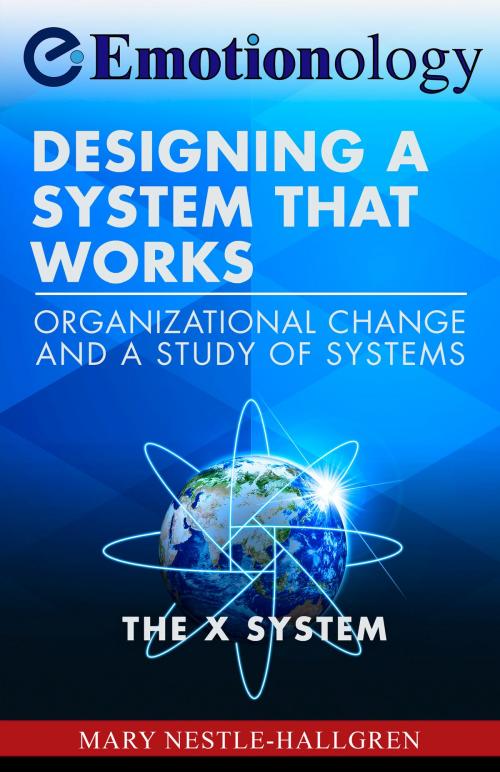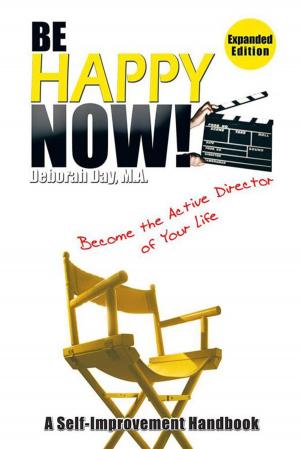Designing A System That Works
Nonfiction, Health & Well Being, Self Help, Self Improvement, Stress Management, Psychology, Emotions| Author: | Mary Nestle-Hallgren | ISBN: | 9781370522323 |
| Publisher: | Mary Nestle-Hallgren | Publication: | February 16, 2017 |
| Imprint: | Smashwords Edition | Language: | English |
| Author: | Mary Nestle-Hallgren |
| ISBN: | 9781370522323 |
| Publisher: | Mary Nestle-Hallgren |
| Publication: | February 16, 2017 |
| Imprint: | Smashwords Edition |
| Language: | English |
Mary Nestle-Hallgren MBA, MCC is author, coach, and Entrepreneur with 30 plus years experience as business coach and developer of the field of Emotionology. She devoted many years synthesizing (NLP) Neuro-Linguistic Programming along with other modalities into a reliable method for developing emotional intelligence and creating culture change in business systems. Hallgren begins with a description of the worst model she calls the X System of how some organizations work.
In 1994 she first presented this X System model in its original form to the Justice Department in Denver, CO. as the Positive vs. Negative Systems. Many revisions later, she settled on one way of describing two opposite ends of a continuum of possible organizational design and how to move between the two. She re-defines culture as the smell of the organization.
Starting with the most extreme authoritarian form of business or government system, she then gives a counter example – a vision of the best of possible worlds to move towards. The X System could be equated to darkness. Vision is light. We need a vision of that ultimate goal of what a total positive system could become. This same X system dynamic can be seen operating in any group be it families or a large organization.
Breaking an organization down to its elemental parts and how these parts operate together presents a unique picture. The elements are interactions between management, employees and relationships. The smallest element of any organization is the thinking of each individual and how that thinking fits with the whole larger mind of the organization. If there is a problem in any system, it is because there is some missing attraction, cooperation, or block to integration. How smooth operation, has to do with the underlying thinking of the individuals and how the parts come together as a whole. Each individual has to have the willingness to cooperate for some mutually beneficial outcome for there to be success. Any deficiency limits integration.
Emotionology is a study of thinking and the kind of thinking that creates wholeness. If each person is feeling whole and valued, the organization will run simply and easily.
In this study of organizations we can see that some organizations operate in continuous instability while others pull together through some kind of attraction. The book is a study of the X thinking in the X System that creates a difference between the two models.
How an organization thinks is a feedback loop.
Obviously all individuals including management behave as a result of the way they think. How people in the system think and what they believe affects the whole organization.
The way the whole system operates in return reverberates back to affect thinking and emotions, behavior, beliefs, and values of its people. Although this feedback loop mostly begins and ends with leadership, the evaluation of systems here relates to thinking on all levels or the mind-set of everyone in the system. And, although change begins and ends with individual thoughts, the focus is on leadership.
From a practical standpoint and a larger view, every business is trying to create wholeness in the world in some way by filling a need. When a business fills a need in the world, it becomes a viable business. If there were no needs to fill, we wouldn’t have a reason for business. The discussion here is to examine wholeness from an organizational design perspective.
Emotionology is the science of how emotion is created and linked to memory and how the whole process works for the individual as well as within systems in the world. Emotionology is a practical body of information and set of thinking tools or techniques and is used as a coaching modality. See Emotionology.org.
Mary Nestle-Hallgren MBA, MCC is author, coach, and Entrepreneur with 30 plus years experience as business coach and developer of the field of Emotionology. She devoted many years synthesizing (NLP) Neuro-Linguistic Programming along with other modalities into a reliable method for developing emotional intelligence and creating culture change in business systems. Hallgren begins with a description of the worst model she calls the X System of how some organizations work.
In 1994 she first presented this X System model in its original form to the Justice Department in Denver, CO. as the Positive vs. Negative Systems. Many revisions later, she settled on one way of describing two opposite ends of a continuum of possible organizational design and how to move between the two. She re-defines culture as the smell of the organization.
Starting with the most extreme authoritarian form of business or government system, she then gives a counter example – a vision of the best of possible worlds to move towards. The X System could be equated to darkness. Vision is light. We need a vision of that ultimate goal of what a total positive system could become. This same X system dynamic can be seen operating in any group be it families or a large organization.
Breaking an organization down to its elemental parts and how these parts operate together presents a unique picture. The elements are interactions between management, employees and relationships. The smallest element of any organization is the thinking of each individual and how that thinking fits with the whole larger mind of the organization. If there is a problem in any system, it is because there is some missing attraction, cooperation, or block to integration. How smooth operation, has to do with the underlying thinking of the individuals and how the parts come together as a whole. Each individual has to have the willingness to cooperate for some mutually beneficial outcome for there to be success. Any deficiency limits integration.
Emotionology is a study of thinking and the kind of thinking that creates wholeness. If each person is feeling whole and valued, the organization will run simply and easily.
In this study of organizations we can see that some organizations operate in continuous instability while others pull together through some kind of attraction. The book is a study of the X thinking in the X System that creates a difference between the two models.
How an organization thinks is a feedback loop.
Obviously all individuals including management behave as a result of the way they think. How people in the system think and what they believe affects the whole organization.
The way the whole system operates in return reverberates back to affect thinking and emotions, behavior, beliefs, and values of its people. Although this feedback loop mostly begins and ends with leadership, the evaluation of systems here relates to thinking on all levels or the mind-set of everyone in the system. And, although change begins and ends with individual thoughts, the focus is on leadership.
From a practical standpoint and a larger view, every business is trying to create wholeness in the world in some way by filling a need. When a business fills a need in the world, it becomes a viable business. If there were no needs to fill, we wouldn’t have a reason for business. The discussion here is to examine wholeness from an organizational design perspective.
Emotionology is the science of how emotion is created and linked to memory and how the whole process works for the individual as well as within systems in the world. Emotionology is a practical body of information and set of thinking tools or techniques and is used as a coaching modality. See Emotionology.org.















